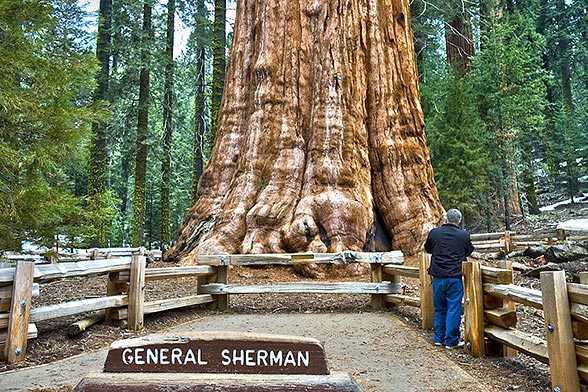General Sherman Tree, The Largest Tree in the World

We don’t know how many people it takes to hug the biggest tree in the world, but we do know that nature gave it over 2,300 years to grow to its 84 m (275 ft) height and estimated weight of around 1,385 tons. The tree, called General Sherman, is a giant sequoia in the Giant Forest of Sequoia National Park in California, US.
Scientists may debate these numbers, and studies show that our planet shelters trees proved to be older than 4,000 years. However, the largest trees are not always the oldest ones.
So why does General Sherman claim the title of the “biggest tree” in the world? It’s not the height or age that counts, but the total trunk volume, which is around 1500 m³. It is a little hard to imagine just by looking at it in photos, but comparing to other big trunk volume trees registered in the US official database (e.g. the largest southern live oak is 136 m³; the largest bald cypress - 146 m³), General Sherman is huge.
If you ever consider visiting the giant sequoia, book a trip to Sequoia and Kings Canyon National Park in Tulare County, California. The massive tree is visually impressive, and if you love nature, you cannot miss these majestic sequoias. There are numerous trails for tourists interested in seeing the tree, which was named after the famed Civil War General William Tecumseh Sherman. A nearby car parking was recently built to handle the massive tourist interest.
General Sherman might be the biggest sequoia, but most of the tree consists of dead wood. During a winter storm in 2006, a large branch fell off and reminded how vulnerable nature and humans alike are to adverse weather conditions.
If your plans don’t lead you soon to California, don’t worry. You’ll only have an even more impressive experience next year, when General Sherman will be even bigger - scientists calculate that the tree is still growing at the rate of 1.02 cm in diameter annually!